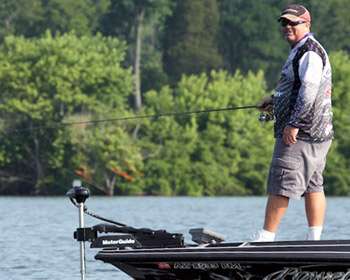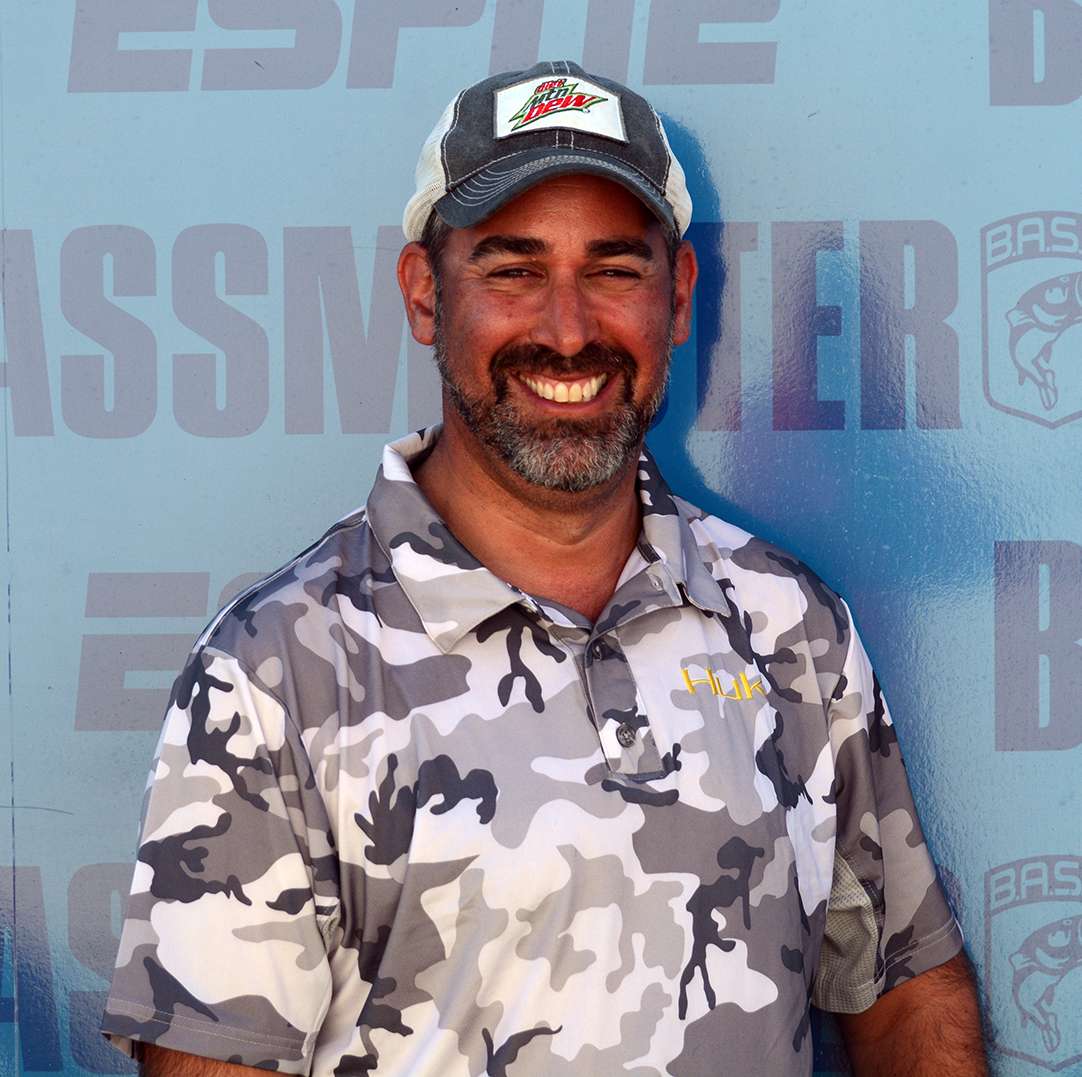
When using light line, Arizona pro John Murray heeds the advice of legendary UCLA basketball coach John Wooden: "Be quick, but don't hurry." Murray is renowned among his fellow pros for his ability to use light tackle to finesse wary bass. That may derive from his fishing education on the clear lakes of the desert southwest, but he uses light line to his advantage coast to coast.
He knows that the biggest mistake an angler can make is to hurry a hooked fish. "Take your time," he explains. "You cannot horse a fish, especially a smallmouth, with light line.
When the bass changes direction in the blink of an eye and you're still pulling the other way, they're going to break that line." He heeded his own advice at this year's Empire Chase event on Lake Erie, where he finished fourth with 20 smallmouth that totaled just a hair less than 80 pounds.
He says that every fish he caught during the week took between eight and 12 minutes to land. "I was putting pressure on them with the rod, but I wasn't pulling on them," explains Murray. "I'm not trying to yank them off the bottom. Let them swim around real deep and get tired and then when they come up to the boat they won't be too wild."
While it's obvious that any line you use, whether monofilament, fluorocarbon or braid, should be of a high-quality, Murray says that light line requires a little extra care than its heavier counterparts. "Whether you use fluorocarbon or monofilament, you have to check it often," he explains. "You can tell really quickly if you're getting some fraying.
That's where problems come from, so check your line a lot." Because a small nick in a line guide can weaken line as well, make sure all the guide surfaces are smooth, he adds. Murray stresses that light line is only part of the comprehensive tackle system. The wrong rod or reel can completely undermine the line's advantages.
"You have to start with your rods and reels and make sure everything lines up," he says. "Whether you're using 25-pound monofilament, 50-pound braid, or 6-pound fluorocarbon, you must select the right rods and reels. That's the biggest mistake I see people make. They use the same rod with different lines, and that just doesn't work." Murray prefers a 7- to 7 ½-foot spinning rod for light line applications. He rarely, if ever, uses baitcasting tackle with lighter than 10-pound test.
He describes the ideal rod action as "medium-light to medium with a good parabolic bend." He adds that a long rod "has a lot of forgiveness and that's a real key when you're using light line. When a fish dives, you can give it as much as 14 feet of line just by lowering your rod toward the fish. A really short rod can be a handicap when the fish makes its run. "
A quality reel is also critically important. Some anglers backreel larger-than-average fish to feed them line when they surge but Murray prefers to rely on a silky-smooth drag system. "If you're going to use light line, you have to spend the money to get a decent reel that has a decent drag," he explains. "A cheap reel will have a balky drag.
By that I mean it'll start to go and then it'll freeze up, and your 6-pound line will snap. Upgrade to a reel with a really smooth drag so that when a big fish starts pulling out line, it will hold. Trust your drag and let it do its job, and you shouldn't have any problems," allows Murray. Despite the fact that the Arizona pro has developed his reputation and his bank account on the strength of light line, his final piece of advice shows that he's aware that it has its limitations.
"Only use it for applications where you need it," he says. In other words, don't bring a knife to a gun fight. At the same time, when light line is the weapon of choice, there's no reason to shy away from it.
(Provided by Z3 Media)





